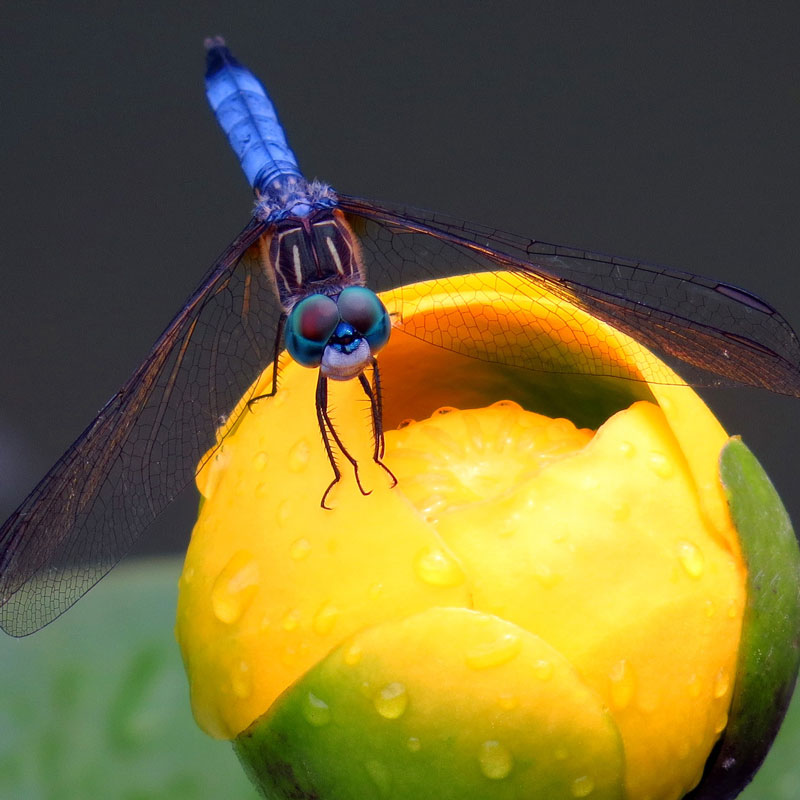Blog
Returning to the Pond: The Plot Twist that Keeps Me Humble

by Cory Christopher, Director of Conservation
I sometimes re-read particularly good scientific papers. I tend to prefer ecological topics, as you may imagine, but I specifically love ecosystem-level research that demonstrates the interconnectedness of species that may not otherwise appear to be connected.
One of my favorite studies focused on life around the edge of ponds. In the study, researchers discovered that flowers around the edge of fishless ponds had lower pollination rates than flowers around ponds with fish.
Admittedly, when I first read the one-liner summary of the paper, I was excited that they had discovered a new fish species that somehow pollinated the flowers beside their ponds. I mean, how cool would that be? Well, the truth is even crazier.
It turns out that in ponds without fish, there were more dragonfly larvae. These larvae are like little underwater, well, dragons, and live as aquatic insects before they emerge from the pond as winged adults.
Ponds with healthy fish populations do not have as many larvae because fish love to eat them.
This means that fishless ponds have more dragonflies than ponds with fish.
And, because adult dragonflies are also true to their veracious namesake, these higher populations of dragonflies have a veritable smorgasbord of flying pollinators to feast on.
Because of this, the flowers in these areas have fewer pollinators, so they aren’t able to reproduce as effectively. The first time I read this, I remember sitting there afterwards with my mouth partially open, as if the fourth wall of some cosmic play had been shattered, and I was privy to secrets that nature had not wanted me to know.
I’m not even easily impressed, but dang. Mind = blown.
Fish actually ensure effective pollination. I can't get over the elegance of the study, the straightforwardness of the results, and the awesome implications for conservation.
As a plant ecologist, I can become a bit myopic about the way ecosystems work. Although my brain functions almost exclusively in terms of systems, I also have a strong plant bias.
So when I think of removing invasive Amur honeysuckle from native woodland fundamental and important levels of our habitats, I risk forgetting that the results are larger and more systemic than those on the understory plant community.
For instance, studies have demonstrated that chemicals in the leaves of Amur honeysuckle are toxic not only to amphibians, but also to aquatic invertebrates—especially those that are important in aquatic food webs.
And, on the terrestrial side, Amur honeysuckle provides increased cover for seed-eating species like mice and songbirds, which alters local food webs and could reduce the abundance and diversity of seeds in the seedbank.
Removing the shrub, then, not only restores food webs and the integrity of the plant community, but it helps re-establish the natural connections between the terrestrial and the aquatic.
I can certainly wax poetic about the threads of nature and the web of life and all that, but what takes the awe to the next level is that these connections are real and we have scientific evidence that they play critical roles in the way our world works.
Yes, I want to see an abundance of spring ephemerals blooming in newly restored woodlands, and absolutely I want to hear the swish swish of Indian grass blowing on an autumn breeze.
But deeper than that, it is fulfilling to remember that the conservation work I’m involved with has restorative effects at the most local ecosystems.
When you’re doing your landscaping and gardening this spring, I want you to remember that yards without native plants are like ponds without fish. On the surface, it may not seem like such a big deal.
But deeper down, there are important connections that we don’t fully understand—connections between the eaters and the eaten; between your pond and everyone else’s.